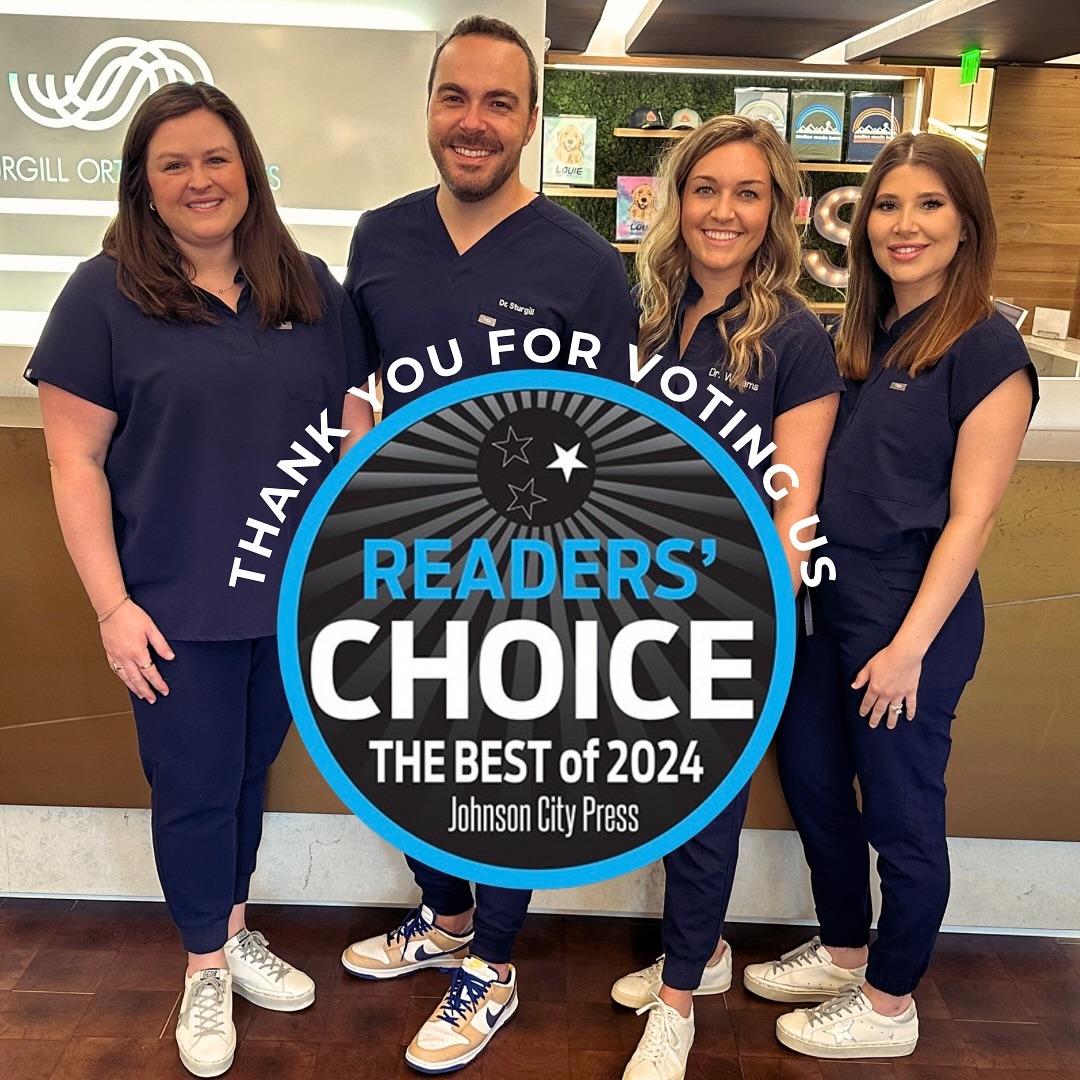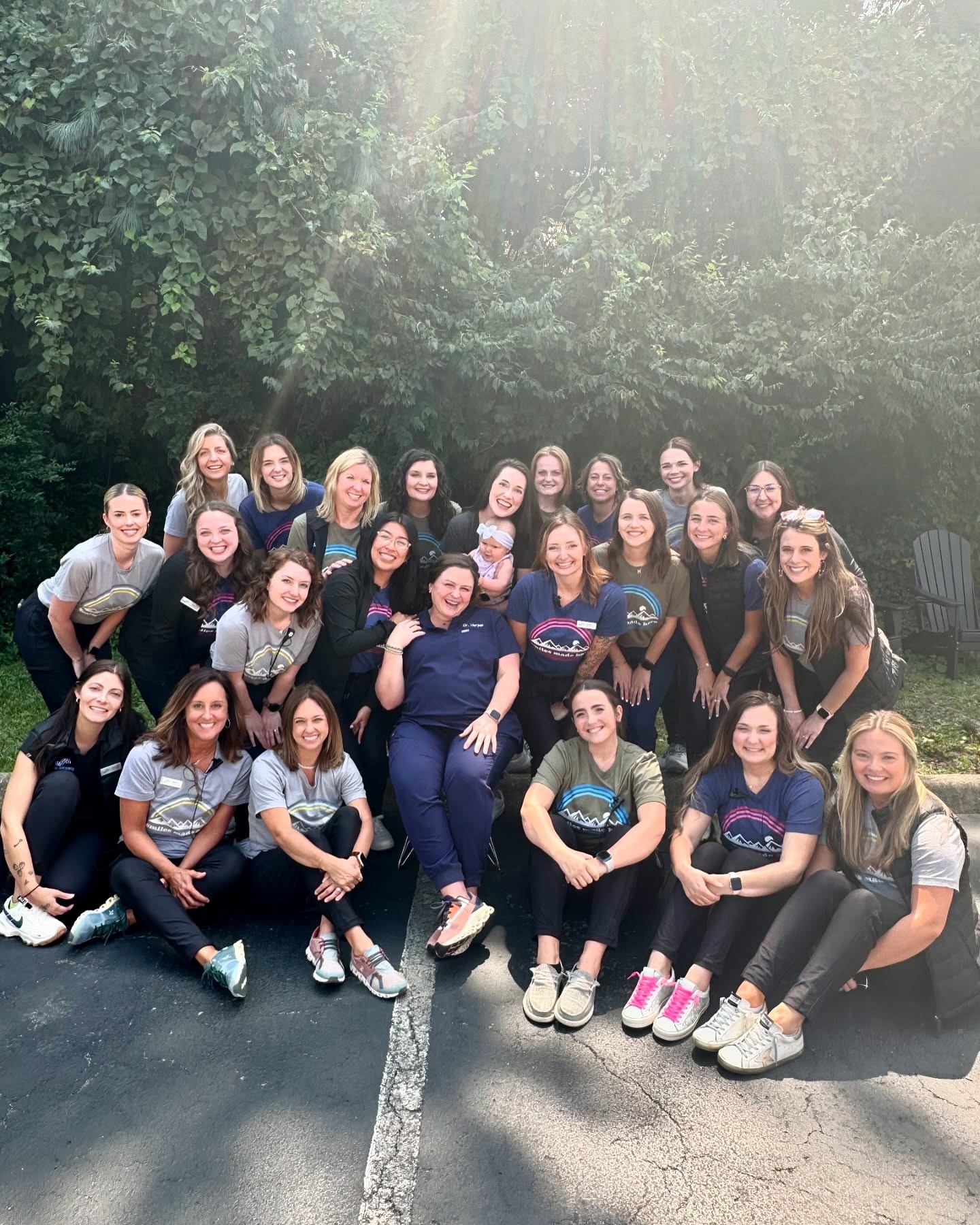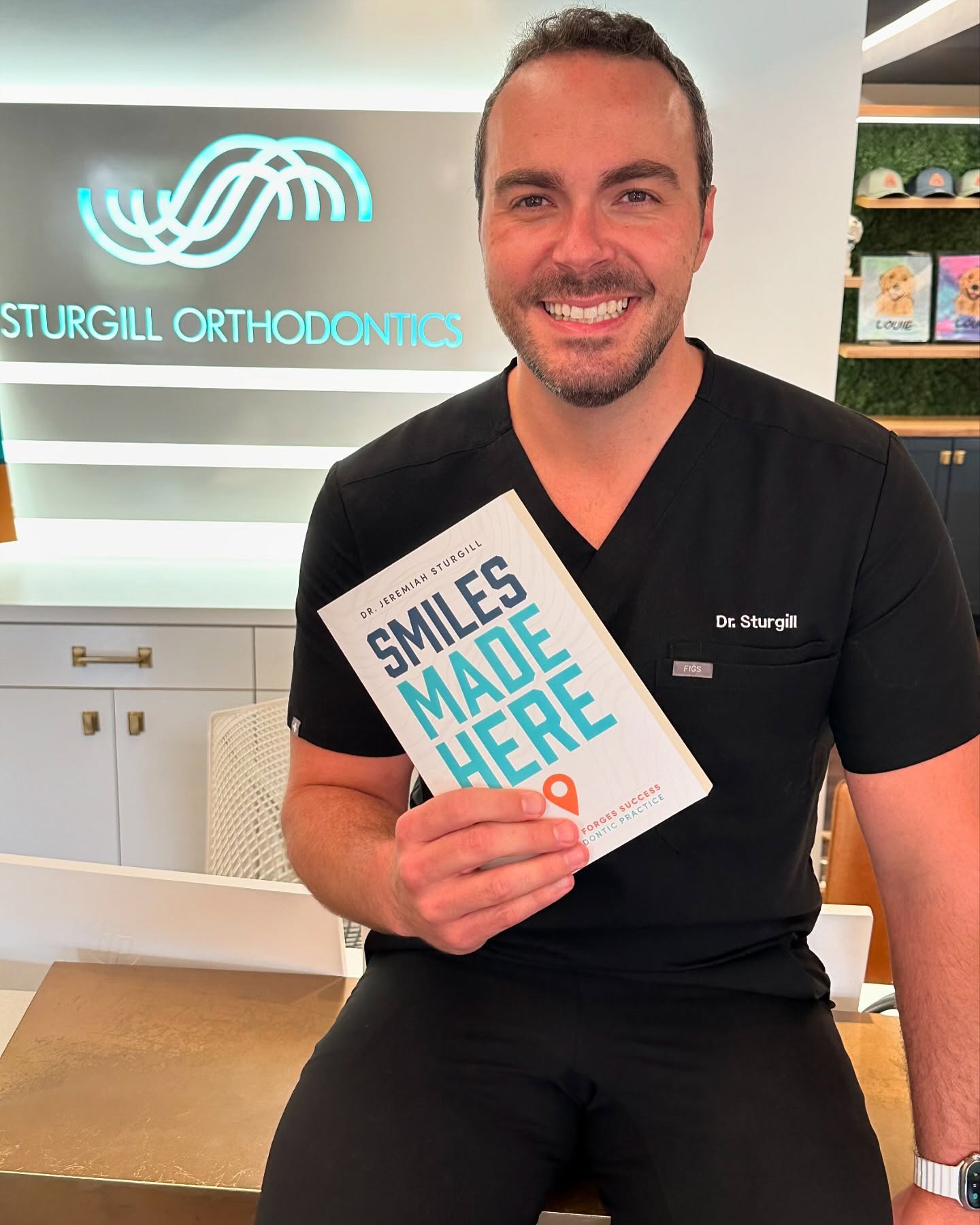In the competitive landscape of orthodontic care, patient referrals remain the lifeblood of practice growth. That’s why we’d like to share our proven ways to increase orthodontic patient referrals.
At Sturgill Consulting, we understand that cultivating a steady stream of referrals requires both traditional relationship-building and innovative digital approaches.
As part of our comprehensive orthodontic practice growth strategies, increasing patient referrals represents one of the highest-ROI activities for sustainable practice expansion.
Schedule Your Consultation with Dr. Sturgill
Quick Takeaways:
- Referrals account for the highest-value patients in orthodontics, with 16% greater lifetime value than non-referred patients
- Parent and doctor ambassador programs are top drivers of new orthodontic patients
- Digital tools like AI-powered remote monitoring and patient testimonials significantly boost visibility and referrals
- Implementing a structured referral tracking system helps identify which strategies generate the best return on investment
- Consistent quarterly review and refinement of your referral program ensures sustainable practice growth
Whether you’re an established practice looking to expand or a newer orthodontist seeking to build your patient base, these proven strategies can help you increase referrals and grow your practice sustainably.
Why Patient Referrals Matter
Before diving into strategies to grow your orthodontic practice through referrals, let’s understand why referrals are so valuable.
According to research, 83% of satisfied patients are willing to refer friends and family to their orthodontist, yet only 29% actually do so—simply because they’re never asked!
Additionally, referred patients typically have a 16% higher lifetime value than non-referred patients, making them especially valuable to your practice’s long-term success and sustainability.
Word-of-mouth marketing remains one of the most trusted forms of advertising for orthodontic services, particularly in competitive markets where patients have numerous treatment options.
The Connection Between Referrals and Case Acceptance
While building a robust referral program is essential, it’s only half of the growth equation. To maximize your practice’s revenue potential, you need to convert those referred patients into accepted cases.
Synergy factors:
- Referred patients typically have higher case acceptance rates because they come with pre-established trust
- The referring source (friend, family member, or doctor) has already “pre-sold” your practice’s value
- Implementing both strong referral strategies and case acceptance protocols creates a powerful growth synergy
As experts in dental practice growth have noted, “You will never substantially increase revenue by reducing expenses” – the focus should be on high-impact areas like case acceptance and referrals.
When you improve both referral generation and case acceptance simultaneously, the results are multiplicative rather than merely additive.
Consider this scenario: If your practice increases referrals by 25% and improves case acceptance rate by just 15%, your overall growth isn’t 40% – it’s significantly higher due to the compounding effect of these two improvements working together.

Traditional Referral Strategies That Still Work
1. Create a Formalized Referring Doctor Program
Referring doctors remain a critical source of new patients for orthodontic practices. Develop a systematic approach to building and maintaining these professional relationships with general dentists and pediatric dentists in your area to increase dental referral marketing effectiveness.
Key actions:
- Schedule regular check-ins and appreciation events for referring dental professionals
- Send personalized thank-you notes for each patient referral
- Provide prompt, detailed communication about mutual patients’ treatment progress
- Share educational content relevant to their practices
- Consider hosting continuing education events that benefit your dental colleagues
When a general dentist refers patients to your practice, they’re putting their reputation on the line. Ensure every referred patient receives exceptional care that reflects positively on the referring doctor.
This reciprocal approach strengthens your orthodontic referral program and encourages continued collaboration.
2. Transform Parents into Practice Ambassadors
Research indicates that parent referrals are among the most powerful sources of new patients in orthodontics.
Design a specific Parent Ambassador Program that engages parents beyond just being the “chauffeur” or “bill payer” for their child’s orthodontic treatment.
Implementation ideas:
- Create exclusive parent events and appreciation opportunities
- Develop rewards that resonate with parents (spa certificates, restaurant gift cards)
- Establish clear communication channels for parents to provide feedback
- Make special accommodations for families with multiple children
- Provide shareable content that makes it easy for parents to recommend your practice
Remember that many parents are connected to extensive networks through their children’s schools, sports teams, and other activities—making them powerful advocates for your practice.
The “Mommy Network” remains one of the most influential word-of-mouth channels for orthodontists seeking to grow their patient base.
3. Leverage Patient Milestone Celebrations
Create memorable experiences around treatment milestones that patients will naturally want to share with others.
Examples:
- “Braces Off” celebrations with photo opportunities
- Treatment completion certificates and small gifts
- Social media-friendly moments throughout the treatment journey
- Before-and-after photo opportunities with proper consent
Take Your Practice to the Next Level
4. Implement a Patient Referral Rewards Program
Make referring easy and rewarding for your current patients. Design a program that acknowledges and appreciates their efforts to grow your practice.
Program elements:
- Clearly communicated benefits for referring friends and family
- Special recognition for multiple referrals
- Tangible rewards that comply with healthcare regulations
- Digital tools that make the referral process simple and trackable

5. Focus on Creating an Exceptional Patient Experience
The most powerful referral generator is an extraordinary patient experience that people naturally want to talk about.
Experience enhancers:
- Minimize wait times and respect patients’ schedules
- Create a comfortable, inviting office environment
- Train staff to provide personalized, attentive service
- Address concerns and complications promptly and thoroughly
- Offer amenities that surprise and delight
Digital and Innovative Referral Strategies
6. Embrace AI-Powered Remote Monitoring
Modern remote monitoring platforms powered by artificial intelligence can significantly enhance patient experience while reducing unnecessary office visits.
There are systems that allow patients to scan their teeth at home using their smartphone, with AI algorithms detecting issues and tracking progress.
Benefits for referrals:
- Creates a tech-forward image that patients share with friends
- Improves treatment outcomes through more frequent monitoring
- Reduces chair time and increases convenience for patients, especially in outlying areas
- Generates talking points about your innovative approach to orthodontic care
- Helps differentiate your practice from competitors still using traditional monitoring methods
This technology not only improves clinical outcomes but also serves as a powerful marketing tool when patients share their experience with friends and family who may be considering orthodontic treatment.
7. Implement Virtual Smile Design Previews
Use technology that allows potential patients to visualize their future smile before committing to treatment. Train your orthodontic treatment coordinators to focus on the amazing outcome and how their lives will be different after braces!
Implementation options:
- Apps that use augmented reality
- In-office visualization technology during consultations
- Shareable digital previews that patients can discuss with family and friends
- Social media-ready transformation previews
8. Optimize Your Online Presence for Patient Testimonials
Make it easy for satisfied patients to share their experiences online, where potential patients are researching their options.
Digital optimization strategies:
- Streamlined review request system via text or email
- Featured testimonials on your website with patient permission
- Video testimonial collection at key treatment milestones
- Social media showcases of patient transformations
9. Leverage SEO to Amplify Referral Success
While direct referrals are powerful, they work even better when combined with a strong search engine optimization (SEO) strategy.
When a referred patient searches for your practice online after hearing about you, a strong SEO presence reinforces their decision to choose your practice.
SEO referral amplifiers:
- Optimize your website for local search terms that referred patients might use
- Create content that addresses common questions referring doctors and patients have
- Ensure your Google Business Profile is complete with accurate NAP (Name, Address, Phone) information
- Build landing pages specifically for referred patients with streamlined scheduling options
- Include testimonials from both patients and referring doctors in your website content
A comprehensive orthodontic SEO strategy complements your referral program by making it easy for potential patients to find and trust your practice when their friends, family members, or dentists recommend you.
This powerful combination of word-of-mouth and digital visibility creates a consistent flow of high-quality new patients.
10. Develop a Social Media Strategy That Encourages Sharing
Create engaging, shareable content that helps current patients advocate for your practice.
Content ideas:
- Patient transformation Tuesday features
- Staff spotlights that humanize your practice
- Educational content about orthodontic care
- Behind-the-scenes glimpses of office culture
- Treatment milestone celebrations (with permission)
Kickstart Your Practice Growth
11. Create Educational Content Marketing
Community-Focused Referral Strategies
11. Partner with Local Businesses
Build mutually beneficial relationships with complementary businesses in your community to enhance your orthodontic practice’s visibility and referral network in specific geographic areas.
Partnership examples:
- Cross-promotions with family-oriented local businesses in Johnson City, Bristol, and Norton
- Collaborative events with dental offices in the Tri-Cities area
- Discounts or special offers for employees of major local employers
- Joint sponsorships of community events or sports teams
- Co-branded wellness initiatives with health-focused businesses
These strategic partnerships create multiple touchpoints for potential patients to learn about your practice from trusted sources within your community.
This approach works particularly well in establishing your reputation in specific neighborhoods or regions where you’re looking to grow your patient base.

12. Develop School and Sports Team Relationships
Create strong connections with local schools, teams, and youth organizations where potential patients and their families are already engaged.
Engagement opportunities:
- Athletic mouthguard programs for local teams
- Educational presentations about dental health
- Sponsorship of school events or athletics
- Scholarship programs for local students
13. Host Educational Community Events
Establish your practice as a community resource through educational events that address common orthodontic concerns.
Event concepts:
- “Ask the Orthodontist” sessions at community venues
- Informational evenings for parents considering treatment for their children
- Workshops for general dentists on when to refer patients
- Career day presentations at local schools
Measuring and Optimizing Your Referral Program
14. Track and Analyze Referral Sources
Implement systems to accurately track where your referrals are coming from so you can optimize your efforts.
Tracking methods:
- Digital referral source tracking in your practice management software
- Regular patient surveys to understand referral pathways
- Analysis of conversion rates from different referral sources
- Quarterly reviews of referral program performance
15. Continuously Refine Your Approach
Based on your tracking data, regularly evaluate and adjust your referral strategies for maximum effectiveness.
Optimization tactics:
- Increased investment in high-performing referral channels
- A/B testing of different referral incentives
- Regular staff training on referral program details
- Quarterly strategy meetings to review and refine referral initiatives
Bonus: What to Avoid When Building a Referral Program
Even with the best intentions, orthodontic practices can make mistakes that undermine their referral efforts. Here are critical pitfalls to avoid:
1. Not Actively Asking for Referrals
The biggest missed opportunity in most practices is simply not asking.
Research shows that 83% of satisfied patients are willing to refer others, but only 29% actually do so because they’re never asked.
You must deliberately incorporate “the ask” into your patient journey.
Implementation strategies:
- Train your clinical team to naturally mention referrals during positive treatment moments
- Create specific touchpoints in the patient journey where asking feels organic
- Use digital follow-ups after positive appointments to request referrals
- Make referral cards readily available at checkout with a warm invitation to share
2. Ignoring the Patient Experience
No referral program can compensate for a mediocre patient experience. Patients won’t refer family and friends to a practice they don’t genuinely enjoy themselves.
Common experience failures:
- Excessive wait times that patients won’t mention but definitely notice
- Clinical team members who are technically skilled but interpersonally cold
- Uncomfortable office environment (temperature, seating, amenities)
- Billing surprises or confusing financial policies
- Difficulty scheduling convenient appointments
3. Creating Overly Complicated Rewards
When referral programs involve multiple steps, complex rules, or delayed gratification, participation drops dramatically.
Simplification tactics:
- Immediate recognition for every referral, regardless of whether the referred patient starts treatment
- Clear, simple explanation of any rewards program
- Digital tracking that patients can easily access
- Removing unnecessary steps between referral and reward
4. Neglecting to Follow Up with Referring Doctors
Many practices initiate strong relationships with potential referring doctors but fail to maintain consistent communication, especially with those who haven’t referred recently.
Relationship maintenance strategies:
- Quarterly check-ins with all potential referring offices
- Special appreciation for consistent referrers
- Personal outreach from the orthodontist, not just staff
- Educational updates that provide value regardless of referral volume
5. Failing to Train Your Front Office Team
Your front desk staff are often the first to hear about potential referrals, yet many practices don’t equip them with the scripts and tools needed to convert these opportunities.
Front office training elements:
- Response scripts for “My friend wants to know about braces”
- Proactive collection of referred patient contact information
- Immediate recognition and thanks for referral sources
- Prioritized scheduling for referred patients
- Knowledge of referral program details to answer questions confidently

6. Letting Completed Cases Drift Away
Many practices lose connection with patients after treatment completion, missing the opportunity to maintain these families as long-term advocates.
Post-treatment engagement strategies:
- Graduation into a “VIP alumni” program with special benefits
- Periodic check-ins even after retention phase is complete
- Special recognition for patient milestones (graduations, achievements)
- Invitation to practice events regardless of current treatment status
- Social media connections that maintain the relationship
7. Making Referrals Feel Transactional Rather Than Relational
When practices focus exclusively on rewards, referring can feel like a business transaction rather than a natural extension of a trusted relationship.
Building authentic referral culture:
- Express genuine appreciation beyond any tangible rewards
- Share stories about how referrals help the practice better serve the community
- Create a culture where your team feels comfortable referring their own family members
- Celebrate the relationship aspect of referrals rather than just the business growth
Remember, your existing patients are your practice’s best advocates when they truly believe in the value you provide.
By avoiding these common pitfalls and creating an environment where referrals feel natural rather than forced, you’ll build a sustainable growth engine for your orthodontic practice.
Transform Your Orthodontic Marketing
Team Action Plan: Delegating Referral Success
To successfully implement these referral strategies, every team member needs to play their part. Here’s how to delegate key responsibilities:
Team Action Plan
- Reception Team:
- ✅ Ask for referrals at checkout with a warm, conversational approach
- ✅ Track referral sources accurately in your practice management software
- ✅ Send immediate thank-you messages to referring patients
- ✅ Prioritize scheduling appointments for referred patients
- Clinical Staff:
- ✅ Celebrate treatment milestones and create photo opportunities
- ✅ Identify satisfied patients who might be willing to refer
- ✅ Share positive treatment progress with referring doctors
- ✅ Ensure every patient knows about your referral program
- Marketing Coordinator:
- ✅ Schedule consistent social media content highlighting patient successes
- ✅ Monitor and respond to online reviews promptly
- ✅ Create materials that make it easy for patients to refer
- ✅ Analyze referral data quarterly and report trends
- Doctor/Practice Owner:
- ✅ Call top referrers quarterly to express appreciation
- ✅ Host doctor appreciation events
- ✅ Participate in community outreach opportunities
- ✅ Review referral program performance and adjust strategy
By clearly delegating these responsibilities, you ensure your referral program remains active and effective rather than becoming an overlooked initiative.
Frequently Asked Questions About Orthodontic Referrals
How do orthodontists get more referrals?
Orthodontists can increase referrals by implementing a multi-faceted approach. The most effective strategies include:
1) Creating formal referral programs for both patients and referring doctors,
2) Using technology like remote monitoring and virtual smile design to enhance patient experience,
3) Actively asking satisfied patients for referrals at strategic points in their treatment,
4) Building community relationships through events and partnerships, and
5) Ensuring your online presence showcases testimonials and treatment results.
The key is making it easy and rewarding for current patients to refer while consistently delivering exceptional care.
What is a good referral reward program for an orthodontic office?
The most effective orthodontic referral reward programs are simple, immediate, and meaningful to patients.
Cash rewards or treatment discounts work well but must comply with healthcare regulations.
Non-monetary rewards like practice-branded merchandise, gift cards to popular local restaurants, movie tickets, or entries into quarterly prize drawings are also effective.
Many practices find that a tiered approach works best—offering small tokens for initial referrals and more substantial rewards for multiple referrals.
Remember that sincere appreciation often matters more than the reward itself.
Do dental referrals still work in 2025?
Absolutely—dental referrals remain one of the most valuable patient acquisition channels for orthodontists in 2025.
While digital marketing strategies have grown in importance, studies show that patients referred by their general dentist or pediatric dentist have higher treatment acceptance rates and greater lifetime value.
The key difference in 2025 is that these professional relationships now require more nurturing and reciprocity than in previous decades.
Modern orthodontists need to provide referring doctors with detailed treatment updates, educational resources, and consistent appreciation to maintain these vital referral partnerships.
Conclusion
Building a thriving orthodontic practice through referrals requires a multifaceted approach that combines traditional relationship-building with innovative digital strategies and that’s just what we can help you do at Sturgill Consulting.
By implementing these 15 proven techniques to increase patient referrals in orthodontics, you can create a sustainable growth engine that brings in new patients while strengthening your connections with your existing patient base.
At Sturgill Orthodontics, Dr. Sturgill is committed to providing exceptional orthodontic care across our Johnson City, Bristol, and Norton locations.
We’ve implemented many of these strategies in our own practice with remarkable success, and Dr. Sturgill is passionate about sharing these insights with colleagues in the field.
Remember that the most powerful referral program starts with providing extraordinary care and creating experiences worth talking about.
When patients and referring doctors truly believe in the quality of your work, they become your most effective marketing channel for how to get more orthodontic patients through word-of-mouth.
